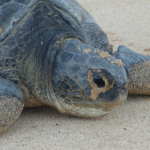
Earth’s oceans are home to some of the most diverse ecosystems on the planet, but warming temperatures are causing many marine animals, including coral, to die out. A new study into managing the effect climate change has on these organisms says that more international collaboration is needed to ensure the future of the more than 6,000 coral species.
“Coral reefs are an essential ecosystem on our planet,” said Andrea Grottoli, co-author of the study and a professor in earth sciences at the Ohio State University. “Coral reefs are really important for humans in that they provide protection to coastlines from erosion and storms, and they’re essential for certain services like tourism and other parts of the economy.”
The study, published in the journal Global Change Biology, advocates for the use of mesoscale sanctuaries, or areas that can stretch thousands of miles, often across national boundaries, to protect these ocean environments.
“Global warming is the No. 1 threat to coral reefs right now,” Grottoli said. “So when we think about coral reef conservation, we can’t limit ourselves to arbitrary geographic boundaries.”
Providing a “continuum of conservation” would benefit reefs immensely, Grottoli said. But because conservation policies differ between various governments and politicians, that can make it hard to protect the environment.
Although coral reefs occupy less than 0.1% of the surface area in Earth’s oceans, about 30% of all marine species are in some way associated with them, Grottoli said. But due to the stress of rising sea temperatures, coral reefs all over the world have experienced higher rates of coral bleaching, or the visible paling of the coral surface.
Under coral bleaching, the animal’s skeleton, once obscured, becomes visible, and effectively turns the creature a faded, ghostly white. Although bleached coral is not immediately dead, it can lead to mass mortality. Researchers say mass bleaching events are an indicator of an ecosystem’s declining health.
Many people may be most familiar with coral via the Great Barrier Reef, a complex coral system so large that the living structure can be spotted from space. Located just off the coast of Australia, upwards of 2 million tourists visit the region each year. The attraction brings in an annual estimated economic value of about $36 billion.
Yet despite being the world’s most protected marine area, the GBR was recently hit by another mass bleaching event, the fourth time in only six years.
While climate change has undoubtedly contributed to the increases in frequency and intensity of these events, warming seas are also changing the composition and architectural complexity of coral reefs. “Under this reality, the future of coral reefs may appear grim,” the paper said.
But there is some good news. Even as the global population of coral dwindles, the genetic diversity of coral species helps ensure that some corals may be able to adapt and recover. And while there is an urgent need to reduce global greenhouse gas emissions, the study also suggests that in the meantime, we need to take broad transdisciplinary approaches to creating both local and large-scale ocean sanctuaries.
Grottoli believes much of the heavy lifting of saving coral will happen through education.
“People who understand coral reefs, and who understand the value of coral reefs, are much more likely to do something to help protect them,” she said. “If you don’t know anything about coral, and you’ve never seen one, how can you have any empathy or feel any connection to that ecosystem?”
In her role as president of the International Coral Reef Society, Grottoli and her colleagues even put together a series of actions individuals can take at home to help scientists’ conservation efforts.
This research was supported by the National Science Foundation.














Social Profiles